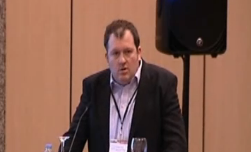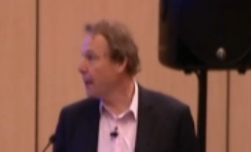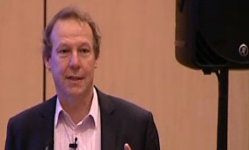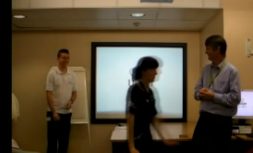Description:
Fungi are everywhere. They’re present in the air, in our food, some even live inside our bodies. But most of us rarely think about diseases caused by fungi. This is because our defences do a really good job in keeping them in check.
However for millions of people whose immune system are defective fungi can cause serious infections that are hard to treat and can be life threatening.
A group of cells called phagocytes play a key role in keeping us safe from fungi. They normally patrol our body so when there’s a breach they are the first to respond. Their function is to seek eat and destroy microbial intruders.
But no all fungi are alike. My Ph.D. project aims to understand how phagocytes tackle such different targets. So far I have found there are huge differences in the rate at which various different fungi are engulfed by phagocytes.
The speed of these processes depends on the chemical composition of the fungi, whether they are alive or dead, and whether they are coated with human proteins that help to mark them as intruders.
Understanding the basic biology behind these processes is the first step towards developing new treatment strategies.
Maria Fernanda Alonso works in Professor Neil Gow’s lab at the University of Aberdeen.
Medical and Patient education videos
-
Title
Description
-

Part 8 of the Management of chronic and allergic pulmonary aspergillosis. Clinical failure and management – how to manage patients who have not responded to standard antifungals. by Prof David Denning. As presented at the 5th AAA meeting in Istanbul 25th January 2012.
-

Management of allergic and chronic pulmonary aspergillosis. Toxicity of tri-azole antifungals. Dr Caroline Baxter at the 5th Advances Against Aspergillosis..
-

Management of chronic and allergic pulmonary aspergillosis. Masterclass part 6 Antifungal side effects and toxicities. Prof Denning & Dr Caroline Baxter at the 5th Advances Against Aspergillosis.
-

Management of allergic and chronic pulmonary aspergillosis. Masterclass part 5. Antifungal drug monitoring and azole dose modification. By Tim Felton at the 5th Advances Against Aspergillosis.
-

Management of allergic and chronic pulmonary aspergillosis. Masterclass part 4: Approaches to therapy by Prof David Denning. Presented at 5th Advances Against Aspergillosis conference in Istanbul January 2012
-

Management of allergic and chronic pulmonary aspergillosis masterclass by Prof David Denning, presented at AAA conference in Istanbul january 2012. Part 1 Clinical and Radiological presentation & diagnosis.
-

The first Aspergillosis for Patients Meeting was held in Rome on Feb 3rd, 2010. Many internationally renowned scientists and doctors gave an excellent review of Aspergillosis and the latest research and treatments at a level that was designed to be understandable by laypeople rather than doctors. Some talks are now also available as podcasts at the iTunes store – search for “aspergillus and aspergillosis podcasts”.
-

A summary of the potential health impacts of living in a damp home: Video provided by US companies with a financial interest in remediating homes so some marketing of specific services is featured. The Aspergillus Website does not endorse these specific services and care should be taken when employing anyone to carry out this type of work on your home.
-

A collection of video and audio resources intended for patients consisting of self help, patients own stories and patient conference talks.
-

A patient interview. This patient RW- with long term chronic pulmonary aspergillosis describes his experiences over 18 years during which he has taken various antifungal treatments. He remains well and currently takes itraconazole. A synopsis is shown below. This patient underwent a lung resection in 1991 for a suspect lesion in his lung, histology revealed inflammation and an area containing fungal hyphae consistent with a fungal ball. Resection appeared to cure the problem. However in 1992 he re-presented with a large new cavity near the site of the surgery and a probable fungal ball seen on X ray. A bronchoscopy sample grew aspergillus and his blood tests were positive for aspergillus precipitins. Chronic pulmonary aspergillosis was diagnosed. Antifungal treatment on itraconazole was started and much improvement was seen. During the next few years the patient tried voriconazole (as a trial drug) – on which he experienced a red facial rash; IV amphotericin – which improved his condition markedly. Itraconazole treatment was then restarted and the patient has been largely stable on this antifungal drug over the last 13 years. On the occasions he has stopped the drug – he has relapsed and it has taken some months before he was again stable. The patient is currently in good health (11/09). We would like to thank the patient for agreeing to share his experiences.
